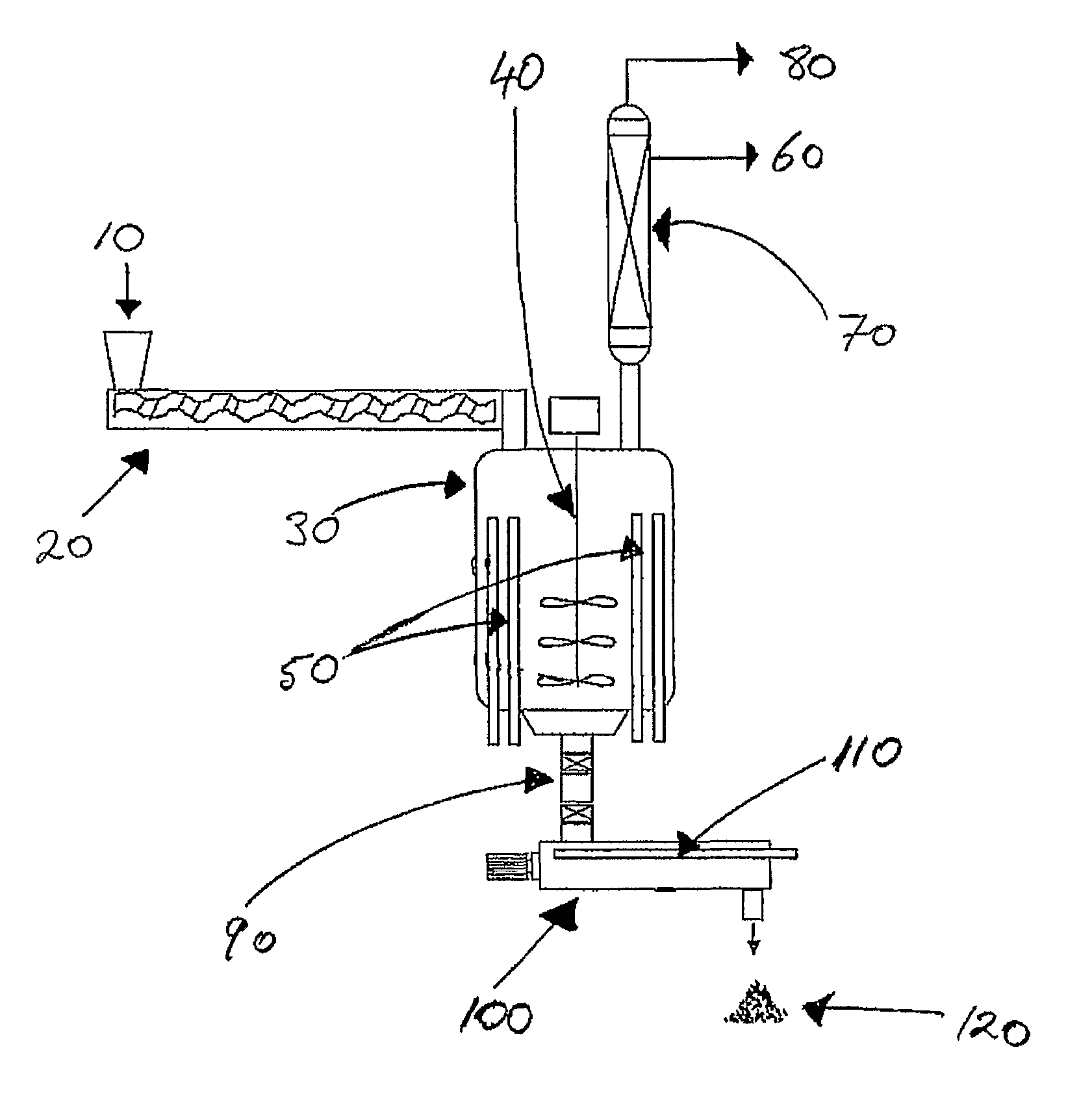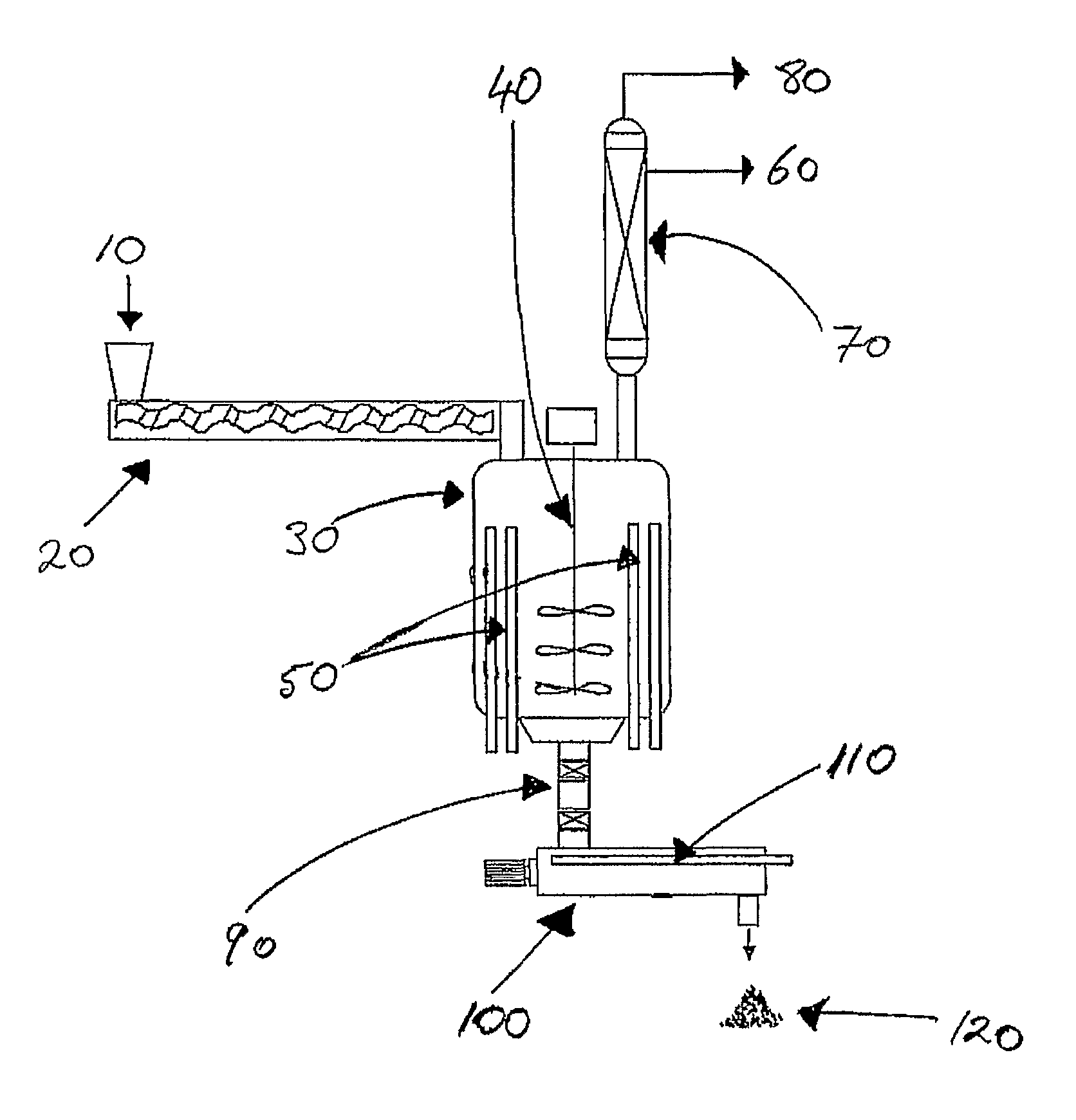Disposal of electrical and electronic equipment
a technology applied in the field of disposal of electrical and electronic equipment, can solve the problems of non-volatile residues resulting from the method, and achieve the effects of simple and efficient processing of equipment, enhanced efficiency, efficiency and safety, and simple and efficient processing
- Summary
- Abstract
- Description
- Claims
- Application Information
AI Technical Summary
Benefits of technology
Problems solved by technology
Method used
Image
Examples
example 1
[0063]WEEE comprising mainly printers and photocopiers was shredded using a Brentwood Industrial Shredders Quad-shaft (four shaft) shredder. Gross metal and glass was then removed from the shredded WEEE by metal separation (magnetic and Eddy current) and screening. The mixed plastics content of the resulting shredded WEEE was about 85 wt. % and comprised mainly HIPS, ABS, PC / ABS, Noryl (PPO-PS), and some polyolefins. The shredded WEEE was then melt processed (extruded) using a vented extruder at 250° C. and passed directly into a stainless steel (SS316) pyrolysis vessel. The melt processed product was then heated from within the vessel by 43 far infra-red heating rods (“inner heating”) to about 425° C. to promote pyrolysis of the plastic material. Volatile hydrocarbons liberated during pyrolysis were condensed and collected to yield about 70% (by weight of the melt processed product) of liquid comprised of a mixture of about 50% C11-C22 (diesel) plus about 20% ethyl benzene and abou...
PUM
| Property | Measurement | Unit |
|---|---|---|
| temperature | aaaaa | aaaaa |
| temperature | aaaaa | aaaaa |
| temperatures | aaaaa | aaaaa |
Abstract
Description
Claims
Application Information
 Login to View More
Login to View More - R&D
- Intellectual Property
- Life Sciences
- Materials
- Tech Scout
- Unparalleled Data Quality
- Higher Quality Content
- 60% Fewer Hallucinations
Browse by: Latest US Patents, China's latest patents, Technical Efficacy Thesaurus, Application Domain, Technology Topic, Popular Technical Reports.
© 2025 PatSnap. All rights reserved.Legal|Privacy policy|Modern Slavery Act Transparency Statement|Sitemap|About US| Contact US: help@patsnap.com


